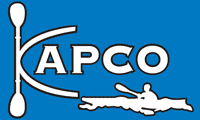Online Information
There's a big, wonderful world of information out there for paddlers these days and CKAPCO are big fans of using it to our advantage to make our recreational activities more efficient, safer and enjoyable. Below are some of the links to external information we find helpful and a few words about each to help you decide whether it may be pertinent to you.
CKAPCO Waivers
Weather
Marine Forecast in the tidal Potomac and Chesapeake
Coastal/Seakayaking
Tides and Currents: Every coastal paddler knows and respects the effects that wind, tidal height, and tidal current have on their trip planning.
River/whitewater paddling
United States Geological Survey (USGS) Real-time Streamflow Monitoring Gages The USGS operates a nationwide network of stream/river gages that measure streamflow and transmit that data via satellite to USGS servers.For many locations in the country one can thereby determine what current streamflow is and look at flow trends to make decisions about fun and safe paddling levels. Combined with the AW interpretation (below), you can determine what ranges of flow are commonly paddled and what those ranges may mean in terms of difficulty and relative safety. Nearly all online depictions of real-time stream flow rely on this data coming from USGS.
American Whitewater's National River Database "AW" is America's premiere whitewater paddling non-profit organization that focuses on access issues for whitewater paddlers. Their stream segment descriptions for popularly paddled whitewater provide the benchmark descriptions and difficulty ratings for streams and in most cases, runnable levels and descriptions. A must-read reference for anyone paddling moving rivers or whitewater is the safety code of American Whitewater.
DC Kayak has a slick site which can be used to select the best Potomac area play spot depending on current river conditions.
The "Randy Carter" Gage. Have you ever seen a series of hand-painted numbers on a bridge piling in a river? Chances are that this is what's called a "Randy Carter gage". Long before the internet existed, paddlers needed a way to determine river levels and would paint these numbers on bridge pilings as a relative reference. Randy Carter, author of the 1974 "Canoeing white water: River guide" guidebook, became the figurative face of this practice. By intent, a mark of zero feet on the gage is the level at which an open canoe can effectively make passage down the run. Lower than zero gets boney. Higher than zero adds progressively more and more flow and "push" and thereby, usually more difficulty and danger. Depending on stream characteristics like morphology, size and gradient, larger or smaller increments of flow increase may increase difficulty. Some large, low-gradient stream may add feet without much more difficulty. Some small, low-gradient stream may become much more difficult with only inches of rise.
Local information and classifieds
The Monocacy Canoe Club hosts a forum on its club site that is used by most paddlers in the DC area to stay informed. Visit Paddle Prattle for the latest info on gear for sale, upcoming events, strainers, and other hazards.



